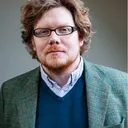
Categories
Curriculum planning
6 July 2020What should we teach in primary history, and how?

John Blake
“How do I define history?” says Rudge, one of Alan Bennett’s History Boys, in his university interview. “It’s just one f***ing thing after another.” As any History teacher tasked with building a curriculum will tell you: “If only.” If history, the subject, really were just the litany of things past, objectively ordered and transmitted, our lives would be substantially simpler, if rather less intellectually stimulating.
At this moment in our collective history, it could not be any clearer that history is not a settled sequence, but a contested debate. When Edward Colston’s statue went headfirst into Bristol harbour (whatever one might think of the propriety of the act), it reminded us that we are not only still making history today, but we are remaking our relationship with the past, and the stories we tell about it.
The past week, many were glued to the stream of Lin Manuel Miranda’s Hamilton, which concludes with its slain hero lamenting he has “no control / Who lives, who dies, who tells your story”. But history educators do have such control, or a fair bit of it. We choose the stories to teach, the spin we will put on those stories, the evidence young people will examine in considering those stories. Of course, that is not the only history education young people will receive—they see the past via their own reading, their families, the public history embodied in statues, monuments and buildings—but still, the choices we make about the History curriculum are powerful and important.
History educators have been struggling with these issues for decades now, and in recent years many have shared practice on how to find more coherent, cohesive structures so that pupils retain and can use their knowledge flexibly. But there must undoubtedly also be a chance for young people to understand the status of the knowledge they have encountered—that history is written based on evidence, for the use of which there are rules, and debates about interpretations are not incidental, but essential.
And of course, in the past few weeks, we have been reminded of the importance of ensuring that all voices about and of the past are represented, fairly and meaningfully, in our study of that past. History teachers already knew that, but there is always more to do, more to learn about how best to construct and curate a curriculum which is knowledge-rich, disciplinarily-valid and accessible to all young people.
All this is a prelude to saying that, as of right now, Oak National Academy has not settled on a primary history curriculum which we think meets the needs of all young people. That is through no fault of either Oak’s history team, any of the other Oak staff or our team of subject advisors, all of whom have given freely of their time, energy and ideas to debate and formulate Oak’s history offer. The key stage 3 curriculum has been crafted with care and consideration and a great deal of input and inspiration from many history educators. In developing the key stage 4 curriculum we have obviously taken careful note of the most widely taught GCSE options. All those involved stand behind that offer as a valid fusion of worthwhile intent and feasible implementation, and we hope the sector will receive it as a useful and supportive tool for planning next year’s learning in the shadow of the pandemic.
There is also a fair amount of primary we have agreed to see developed, units which we know are wanted by the sector and meet the requirements of the national curriculum, and where we know we have resources and capacity to deliver in time for autumn.
For the rest, we are keen to gather more feedback from history educators and the wider school sector.
- How can we ensure the right balance of personal, British and global history for primary-aged pupils?
- How best can we reflect diversity, of the past and today, in a meaningful way?
- What resources already exist which Oak could draw on to generate such units?
- What professional development, particularly around subject knowledge, is out there to ensure teachers feel confident in teaching such units in historically rich, academically rigorous and sensitive ways?
- And how do we make sure that our history curriculum as a whole does justice to stories and experiences that may have been silenced?
In some ways, though we had hoped to be able to show a full curriculum map for history to the sector today, I am quite excited by the possibilities of more thinking time and the chance for wider sharing of debate and ideas. It has been a real privilege to chair the History Subject Advisory Group for Oak, and to debate with such an excellent panel of experts—who I must once again thank for their generous contribution—and I look forward to the wider debate we can all now engage in.
John Blake is Chair of the Oak National Academy Advisory Group for History, a member of the Oak Project Board, and was previously a classroom history teacher for a decade. He currently works for Ark Schools on curriculum research and design.

